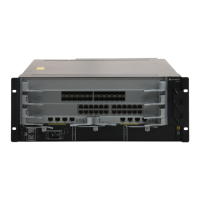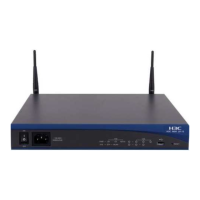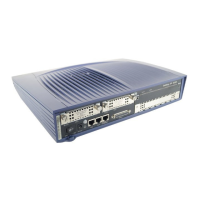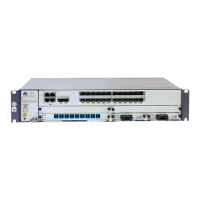Command Manual - Routing Protocol
Quidway S6500 Series Ethernet Switches Chapter 3 OSPF Configuration Commands
Huawei Technologies Proprietary
3-4
By default, an area does not support authentication attribute.
All the routers in one area must use the same authentication mode (no authentication,
simple text authentication or MD5 cipher text authentication). If the mode of supporting
authentication is configured, all routers on the same segment must use the same
authentication key. To configure a simple text authentication key, use the ospf
authentication-mode simple command. And, use the ospf authentication-mode
md5 command to configure the MD5 cipher text authentication key if the area is
configured to support MD5 cipher text authentication mode.
For the related commands, see ospf authentication-mode.
Example
# Specify the OSPF area 0 to support MD5 cipher text authentication:
[Quidway-ospf-1] area 0
[Quidway-ospf-1-area-0.0.0.0] authentication-mode md5
3.1.5 debugging ospf
Syntax
debugging ospf [ process-id ] { event | lsa-originate | packet [ ack | dd | hello |
request | update ] [ interface interface-type interface-num ] | spf }
undo debugging ospf [ process-id ] { event | lsa-originate | packet [ ack | dd | hello
| request | update ] [ interface interface-type interface-num ] | spf }
View
User view
Parameter
interface type num: Type and number of the interface.
process-id: OSPF process ID. If no process ID is specified, all the process debugging is
enabled or disabled.
event: Enables OSPF event information debugging.
packet: Enables OSPF packet information debugging. There are five sorts of packets
in OSPF as follows:
ack: LSAck packet.
dd: Database Description packet.
hello: Hello message.
request: Link State Request packet.
update: Link State Update packet.
Lsa-generate: Enables OSPF LSA packet information debugging.
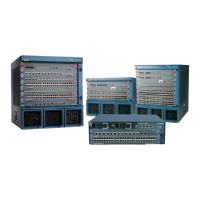
